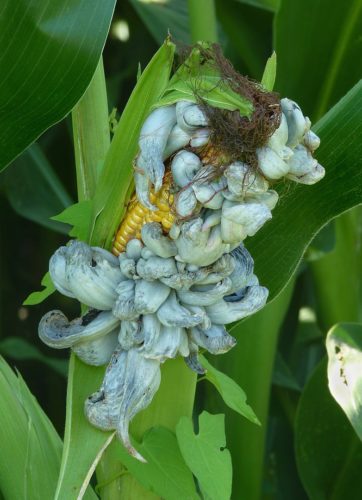Corn smut is a fungus that affects maize (corn), among other crops.
Corn smut (Ustilago maydis) is a fungus that affects maize (corn), among other crops. The fungus invades the developing corn cob and causes the growth of tumors taking the form of mushroom-like fungi.
Corn smut spores are spread by wind and rain and can survive in the ground for up to a decade.
In agriculture, most varieties of corn silage are resistant to corn smut.
Corn smut occurs mainly on dry soils during periods of drought. Corn affected by corn smut is no longer usable; damaged corn is often processed into corn fodder.
In Mexico, corn cobs affected by corn smut are eaten. Two or three weeks after infestation by the fungus, the young cobs are harvested, cooked and eaten. The dish is called huitlacoche.
Where to find
- Sweetcorn
- Maize (corn)
Control
When the characteristic mushroom-like fungi appear, it is too late to prevent further infestation. Remove infested plants; do not replant (sweet) corn in the same spot again because residual spores in the soil can remain active for a long time.
Prevention
Sow resistant varieties.

